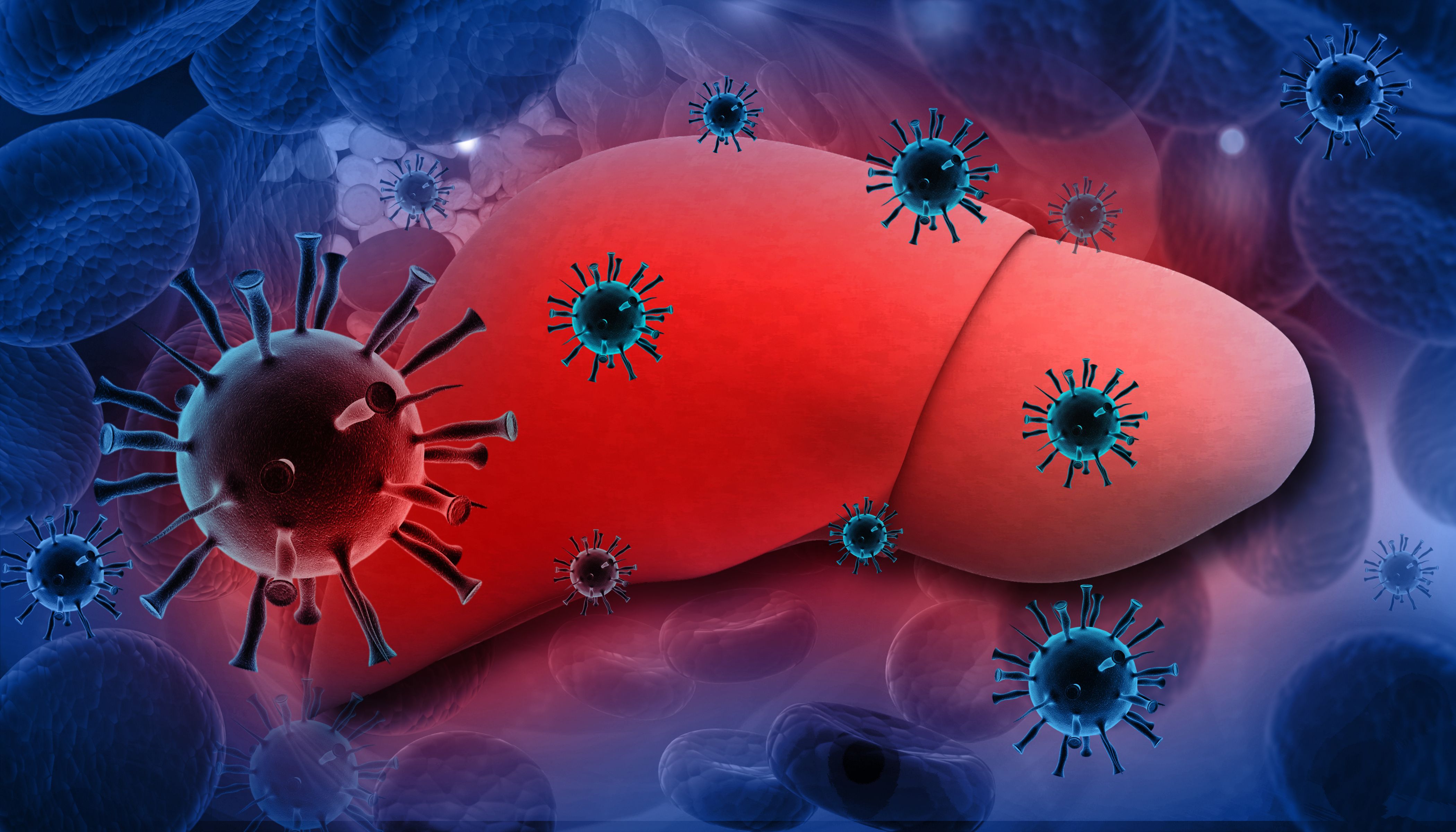Lipid Metabolism Dysregulation Studied in Patients with Chronic Hepatitis B
Scientists from the Affiliated Hospital of Putian University in Putian, Fujian, China recently analyzed the disregulation of lipid metabolism in patients suffering from chronic hepatitis B patients. Their findings were later published in the Journal of Pharmaceutical and Biomedical Analysis (1).
Liver Infection with hepatitis viruses. | Image Credit: © bluebay2014 - stock.adobe.com

Hepatitis B is a liver infection that stems from the hepatitis B virus, which is passed between people through body fluids like blood and semen (2). The disease can spread through various means, from sexual contact to sharing needles to a child inheriting the disease from their mother. While most hepatitis B infections are acute and last less than six months, the infection can alternatively become chronic. Chronic hepatitis B can increase the risk of developing liver failure, liver cancer, or cirrhosis, a condition that can permanently scar the liver (2).
Chronic hepatitis B virus (HBV) affects approximately 300 million patients across the world, with approximately 10% of HBV-persistently infected patients showing signs of liver fibrosis, cirrhosis, and hepatocellular carcinoma (HCC). The disease’s course is usually divided into four phases: immune tolerance (IT), immune active/clearance (IC), inactive carrier state, and reactivation. The key indicators for CHB antiviral treatment are liver necro-inflammation and fibrosis, which exist in and are features of the immune clearance phase. Different diagnosis between the IT and IC phases plays a critical for CHB antiviral treatment. This process is highly dependent on liver biopsy, meaning that a novel non-biopsy approach to identifying biomarkers for differential diagnosis is needed.
For this study, the scientists applied serum metabolomics to identify potential metabolite biomarkers for differential diagnosis between the CHB IT and IC phases. A liquid chromatography–mass spectrometry (LC–MS)-based approach was applied to evaluate and compare serum metabolic profiles. Twenty-eight samples were taken from patients in the IT phase, and 33 were taken from the IC phase. Additionally, appropriate statistical methods were used with a MetaboAnalystR 2.0R package was used to analyze those metabolites. The top altered classifications were lipids, lipid-like molecules, and fatty acyls, showing that there were differences in the lipid metabolomic profiles of HBV-infected patients in the IT phase versus other phases (1).
The team also identified the top 10 potential metabolite biomarkers for differential diagnosis between the IT phase and other phases. Four lipid metabolites were found among them; along with this, the area under the curve (AUC) of two of the metabolites were found. The AUC of a classifier is equivalent to the probability that the classifier will rank a randomly chosen instance higher than a randomly chosen negative instance (3), making this critical for potential substances that can arise in medical procedures. For octadecadienoyl-sn-glycero-3-phosphocholine and 3-Cycloheptene-l-acetic acid, the AUC values were 0.983 and 0.933 (1). Octadecadienoyl-sn-glycero-3-phosphocholine is diacylglycerol (18:2n6/18:0) and 3-cycloheptene-l-acetic acid is a hydroxy fatty acid, both of which are substances associated with lipid metabolism.
References
(1) Ye, X.; He, X.; Hu, Z.; Zheng, F.; Huang, X.; Xie, X.; Chen, F.; Ou, H.; Qiu, R. Metabolomic Analysis Identifies Dysregulation of Lipid Metabolism in the Immune Clearance Phase of Chronic Hepatitis B Patients. J. Pharm. Biomed. Anal. 2024, 239, 115900. DOI: https://doi.org/10.1016/j.jpba.2023.115900
(2) Hepatitis B. Mayo Foundation for Medical Education and Research (MFMER) 2024. https://www.mayoclinic.org/diseases-conditions/hepatitis-b/symptoms-causes/syc-20366802 (accessed 2024-3-26)
(3) Area Under the Curve. Elsevier B. V. 2024. https://www.sciencedirect.com/topics/chemistry/area-under-the-curve (accessed 2024-3-26)
Troubleshooting Everywhere! An Assortment of Topics from Pittcon 2025
April 5th 2025In this installment of “LC Troubleshooting,” Dwight Stoll touches on highlights from Pittcon 2025 talks, as well as troubleshooting advice distilled from a lifetime of work in separation science by LCGC Award winner Christopher Pohl.
Advances in Non-Targeted Analysis for PFAS in Environmental Matrices
March 27th 2025David Megson from Manchester Metropolitan University in Manchester, UK, spoke to LCGC International about the latest developments in non-targeted analysis (NTA) of per- and polyfluoroalkyl substances (PFAS) in environmental matrices based on a recent systematic review paper he has collaboratively published (1).
Study Explores Thin-Film Extraction of Biogenic Amines via HPLC-MS/MS
March 27th 2025Scientists from Tabriz University and the University of Tabriz explored cellulose acetate-UiO-66-COOH as an affordable coating sorbent for thin film extraction of biogenic amines from cheese and alcohol-free beverages using HPLC-MS/MS.






